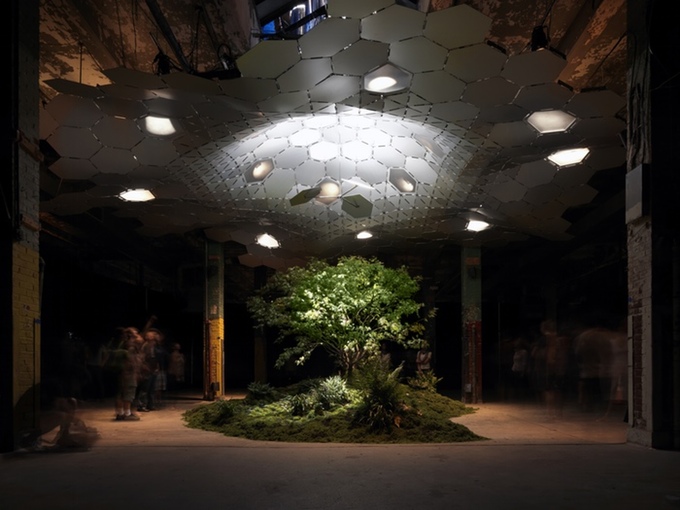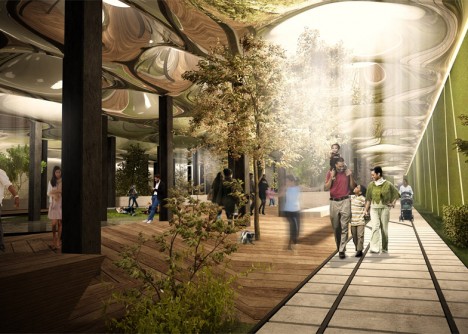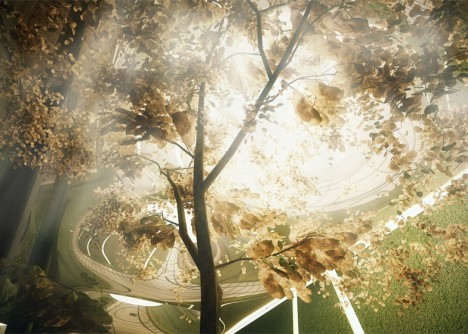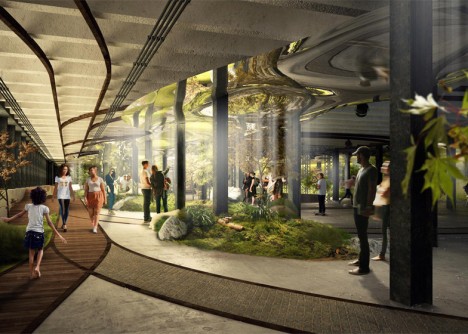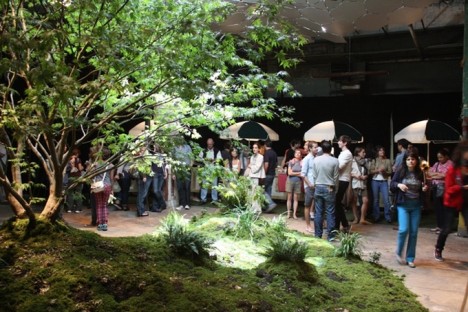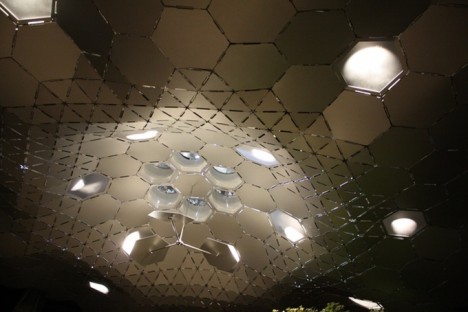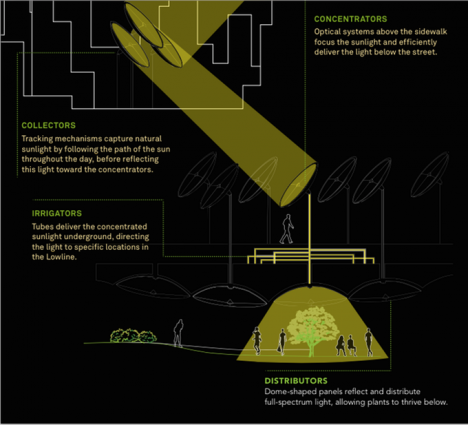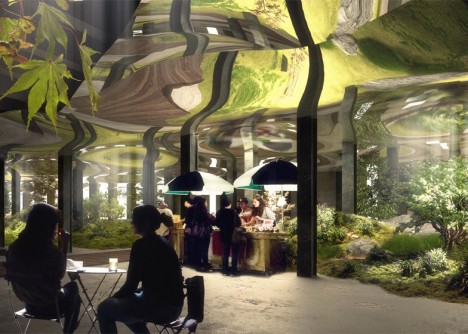With two weeks left to go in its crowdfunding campaign, the Lowline has already raised over $100,000 from over 1,000 backers, promising to turn an old trolley station in Manhattan into the Earth’s first underground park. Inspired in part by the High Line, an NYC park reusing old elevated rail infrastructure, this project aims to add space to one of the most crowded cities on the planet.
The design by Raad Studio is supported by a custom lighting technology being developed specifically for this project, specifically: a “remote skylight” combinating solar harvesting and fiber optics to pipe daylight directly down into the subterranean spaces and paths of the park below.
This system will pipe sunlight from the surface via mirrors and tubes, building on existing designs to route natural light to subsurface labs. As shown below, some tech prototypes have already been tested in an above-ground warehouse but there is still a good deal of research, testing and other work to be done.
Built over a century ago but abandoned for over 50 years, this 40,000-square-foot Williamsburg Bridge Trolley Terminal is in remarkably good shape despite years of neglect. Located in the Lower East Side, the project aims to bring a green retreat to a part of New York City sorely lacking in public landscapes.
In this phase, the funding will further support technological development as well as public exhibitions to raise further interest for the project: “Partnering with the solar device maker SunPortal, we are shipping cutting edge equipment via ocean freighter from South Korea to New York City, and will begin installation over the summer. These devices will track the sun throughout the sky every minute of every day, optimizing the amount of natural sunlight we can capture. These will be connected to a tube-based distribution system and 40-foot-wide canopy inside the warehouse, to help reflect natural sunlight into the Lowline Lab. Once this natural sunlight is filtered into the space, we can test for the quality of the light, taking specific note of spectrum, distribution and intensity.”
This campaign will also provide funds for exploring types of plant life possible in underground spaces: “Our design inspiration is Mannahatta– a verdant vision of the city before modern civilization– and we expect to feature edible plants, and a science fiction palette of greenery forming stalactites, stalagmites, and whimsical passageways. Again, because we are testing in the fall and winter– the two toughest times to grow plants– we will gain valuable insight into which species will perform best throughout the year.”
